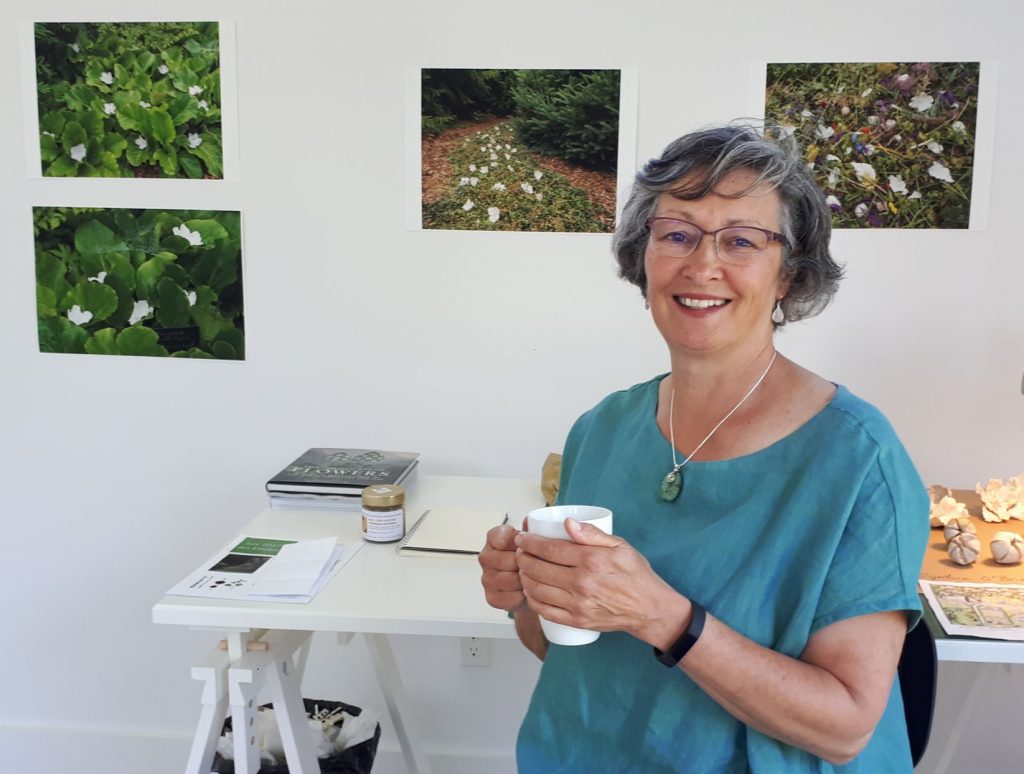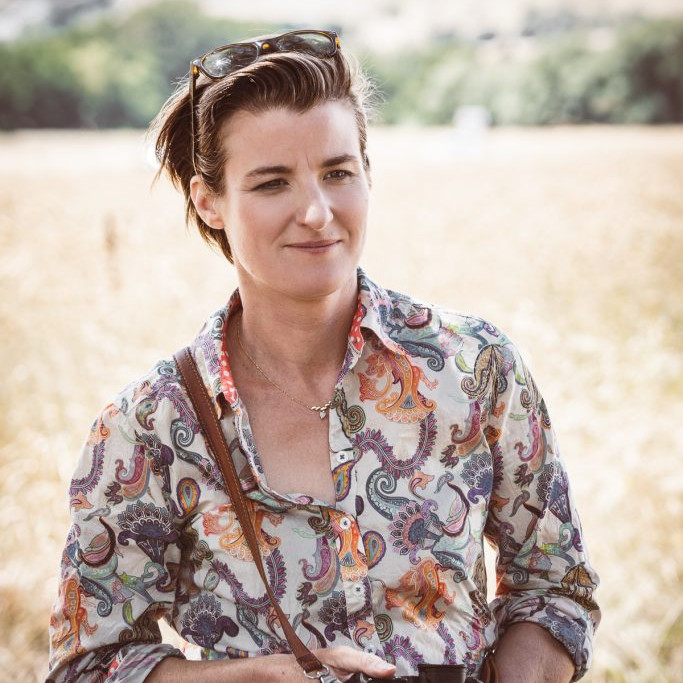Barbara Brown Photo Artist
Can you expand on your Installation – Red Oak Labyrinth?
Many people in Ottawa have long desired to build a Botanical Garden. A plot of land was identified and a group of artists were invited to make temporary installations to animate the area and draw attention to the idea and the place.
With the curators, I toured the area in late November. They had asked that each of the six invited artists use live plants in their installations. As the area has yet to be developed it had no water supply and I couldn’t image being responsible to keep plants alive all summer in an open field without water. So, what to do?
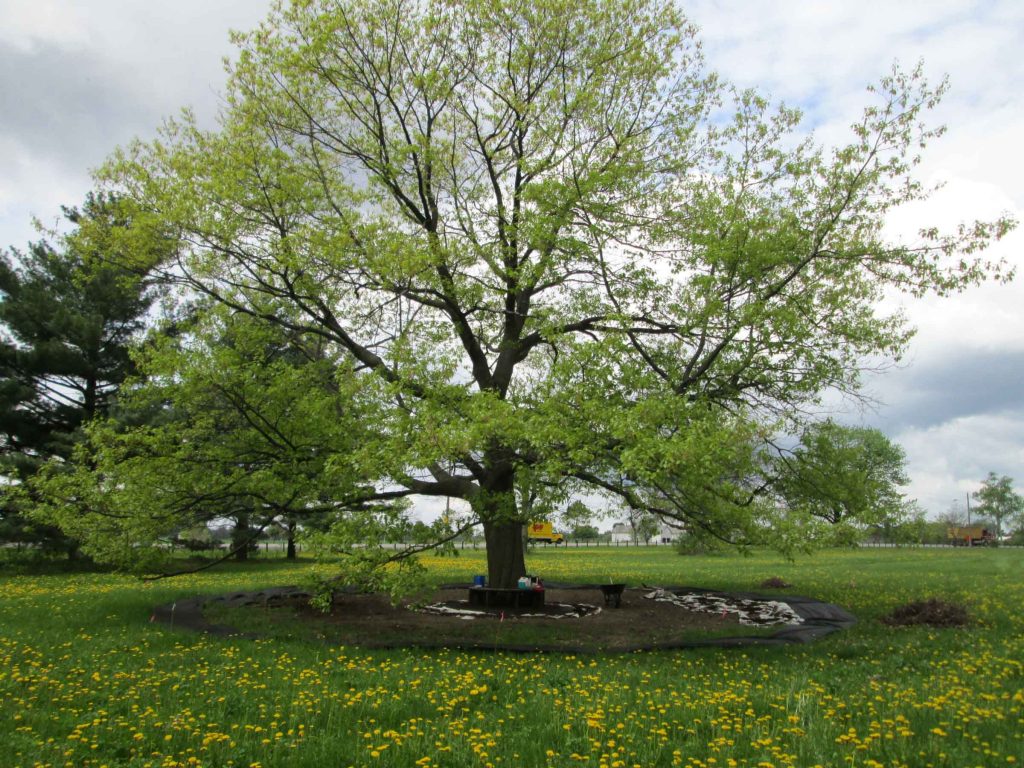
Beginning of Red Oak Labyrinth, in early spring.
A large oak tree caught my attention while touring the field. Its form was clearly outlined as the leaves had fallen and the branches were bare. I’m not sure now what I was imagining but the curators said they thought I might make a labyrinth. For about seven years I had been building these ancient meandering walking paths and offering retreat workshops as a form of meditation or contemplation. The old Red Oak tree had several low branches which defined a welcoming space beneath it, and I could imagine being held by the tree in the circular pattern of the labyrinth. I made a plan to construct a 7-circuit Chartres style labyrinth with a circular bench around the trunk of the tree. We began the work in early May before the leaves had come out. With help from family, friends and volunteers we cleared the weeds and prepared a 70 foot circle beneath the tree.
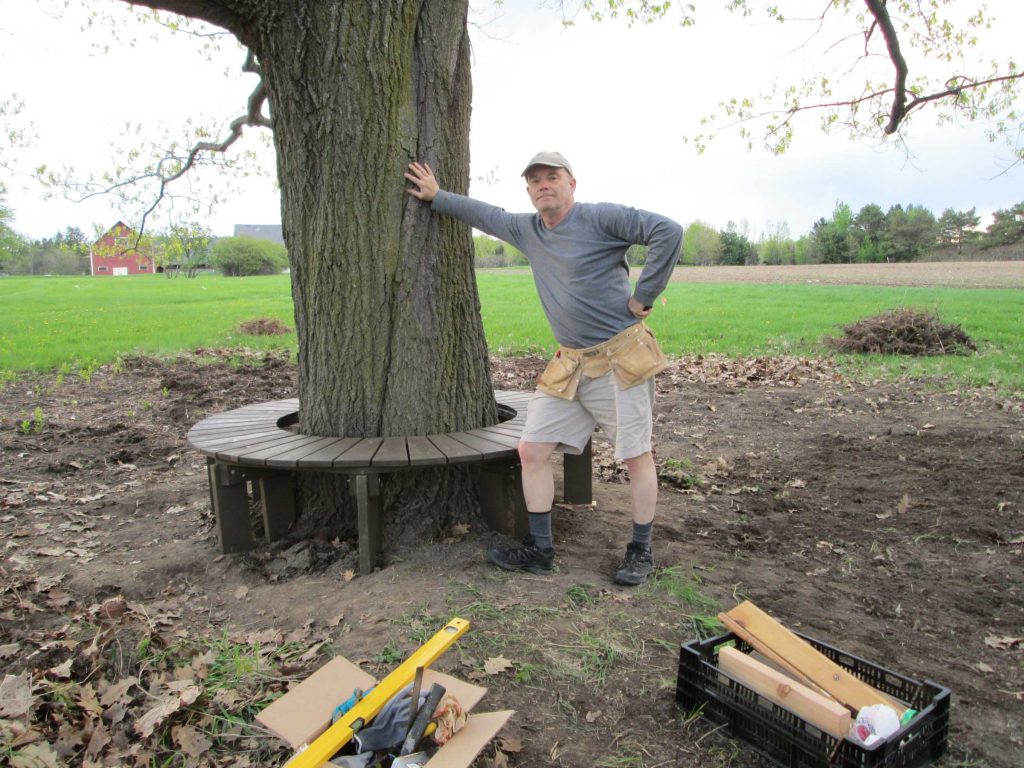
Dan and his round bench for Red Oak Labyrinth.
My partner Dan built the bench and my son cut and split several cords of wood to define the paths of the labyrinth. A call was put out to the community and people came to help set out the cordwood in the circular pattern and then cedar mulch was added to the paths. The labyrinth was completed just in time for the Summer Solstice.
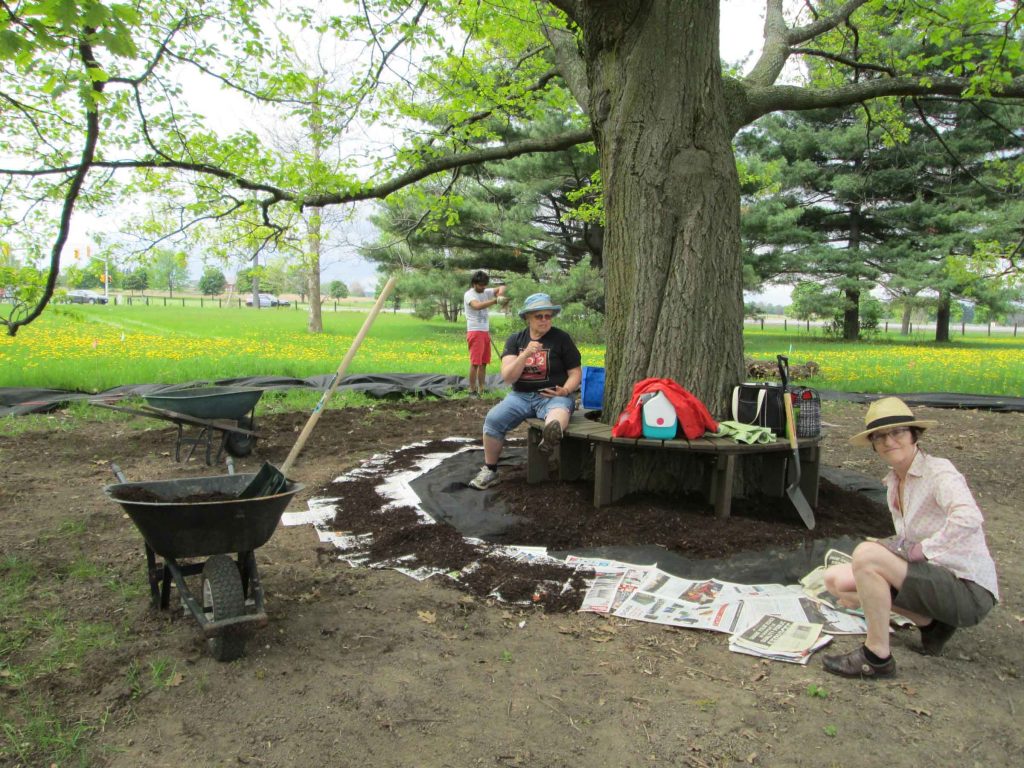
Building the Red Oak Labyrinth with volunteers.
A celebration was called for, even though the exhibition would not open for another week. I called upon my music therapy colleagues and asked if they could form a spontaneous choir of female voices to provide a setting to welcome the first visitors to walk the new labyrinth. On a warm and sunny evening, many friends came bearing flowers to bless the labyrinth and the singers arrived wearing white. The labyrinth was bedecked with white and yellow steamers. Many were enchanted by the experience that evening as they walked the ancient path of mystery and wonder.
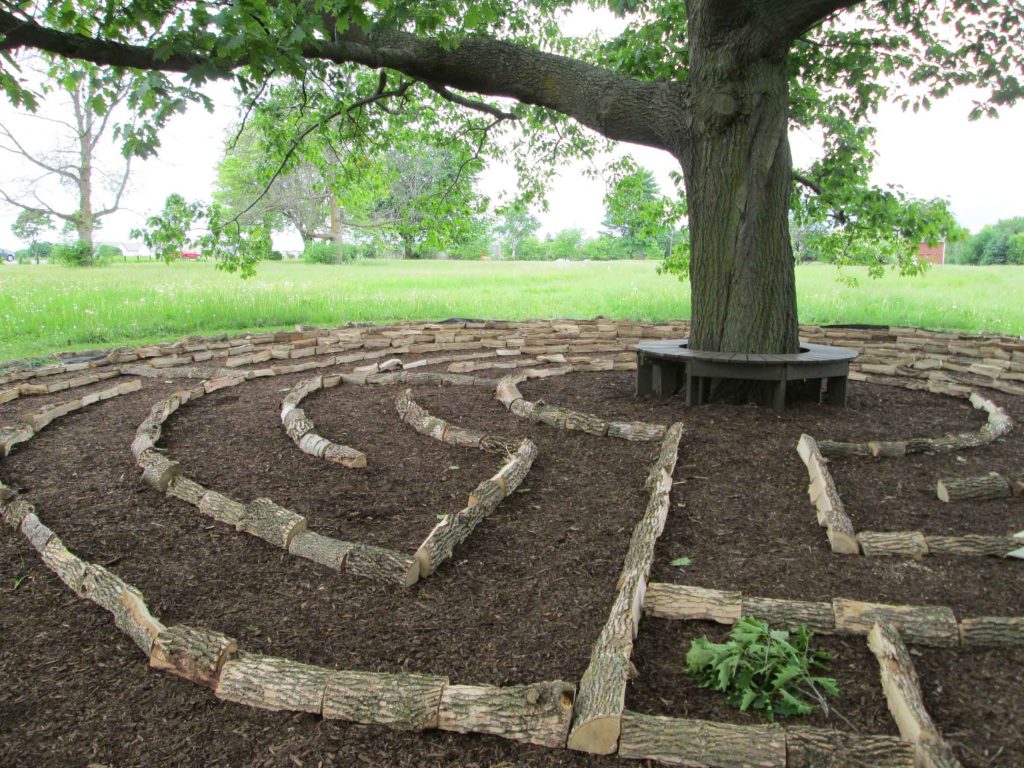 Red Oak Labyrinth, made with split Ash logs.
Red Oak Labyrinth, made with split Ash logs.
The Red Oak Labyrinth was opened to the public the following week and over the next 3 months many, many, people came and left surprisingly profound comments in the weather-proof notebooks tied to the bench in the centre of the labyrinth. I visited many days to tidy the place and to walk the labyrinth and write in my own journal. It became a popular place to visit that summer and helped to establish the place and the dream of a Botanical Garden in the centre of the city.
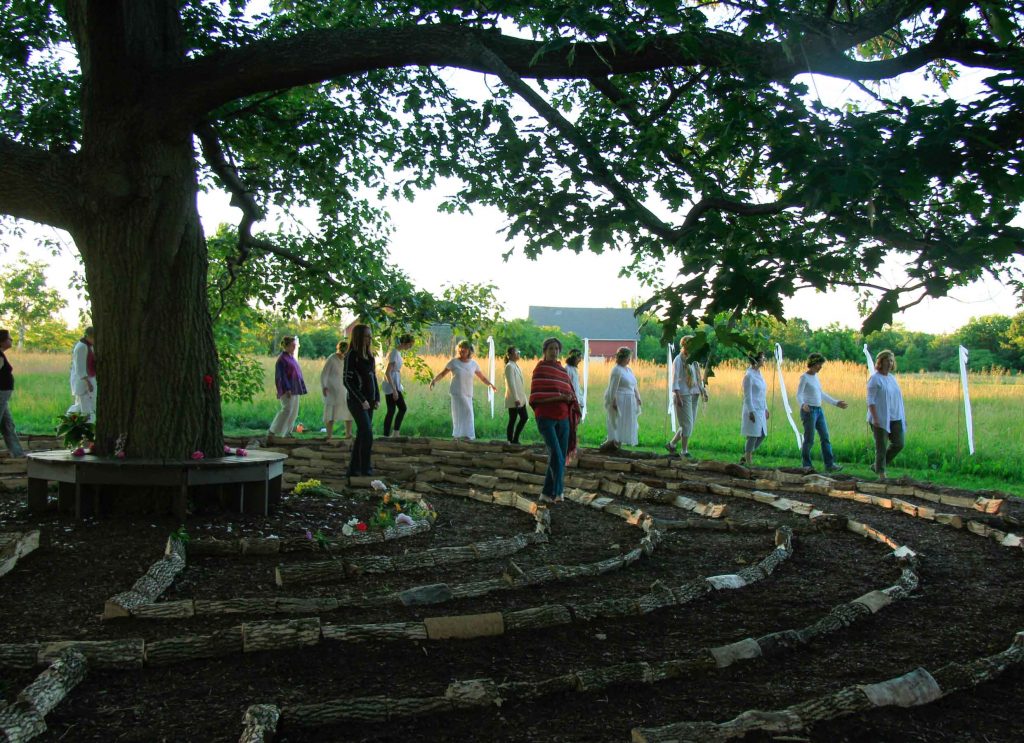 Red Oak Labyrinth, Celebrating Summer Solstice.
Red Oak Labyrinth, Celebrating Summer Solstice.
At the end of the September the exhibition closed and I had to do something to acknowledge all that had taken place in what had become a rather special place for many visitors. I put out the word that a Feast would take place before the dismantling of the labyrinth. About twenty people arrived bearing beautiful dishes of fine food. Words of blessing and thanksgiving were spilled and then collectively we picked up and stacked the cord wood that had been laid in the spring to form the labyrinth. As a gesture of thanks to those who had gathered to help me, I offered a fine oak aged port and spiced shortbread cookie in the shape of an acorn.
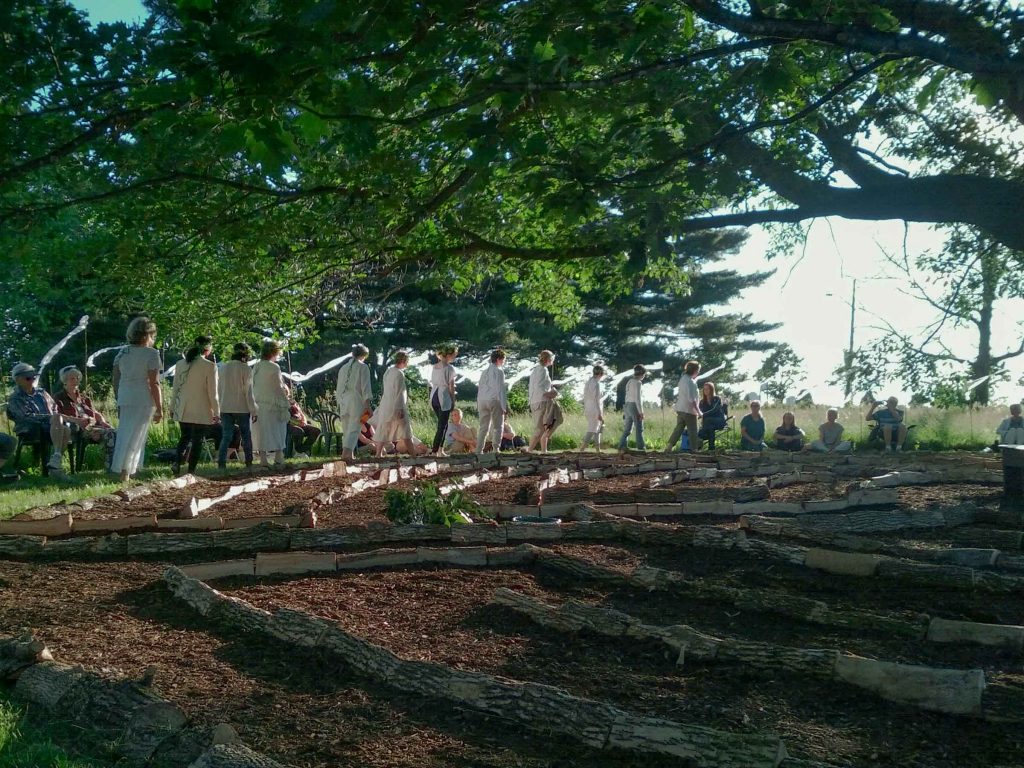
Red Oak Labyrinth, Celebrating Summer Solstice, with a female choir.
My gift at the end of three months was eight notebooks filled with words of praise and comments and stories left by people who had visited the labyrinth beneath the oak tree over the summer. I might one day put all the photo documentation and notebooks together into a book as a way of remembering what was more than I could ever have planned or imaged.
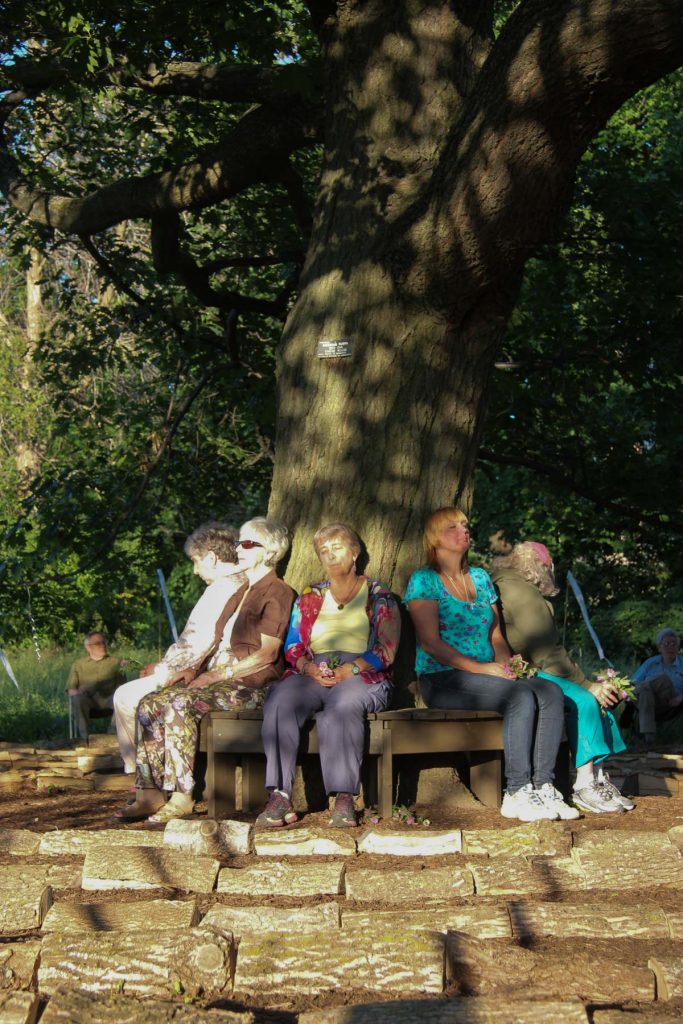
Red Oak Labyrinth, Celebrating Summer Solstice
How have you been able to combine your artistic work and interest in horticulture?
I was asked to start a new program for the Dementia Care Unit at the long-term care facility where I was working as an artist running creative arts programs for the frail elderly. My manager suggested I might try gardening as an activity. I was then thirty years old, living in a downtown apartment and knew nothing about gardening but I gave it try. I got the largest seeds I could find (green beans) and a big clay pot and some soil. To my surprise the men (it was a Veteran facility) loved working with the soil and the beans grew and I was hooked. It was a trial and error approach and I learned on the job. I soon signed up for classes in horticulture and became fascinated by the world or plants, flowers, trees and shrubs. My job afforded me the opportunity to follow my interests and to develop a program that became a comprehensive year around combination of gardening activities both indoors and outdoor, with art activities related to plants and gardens. Over several years, I became an avid gardener and built a sizeable garden at my home. With so much of my attention focused on the garden and plants it was a natural step that my artwork became focused on the garden.
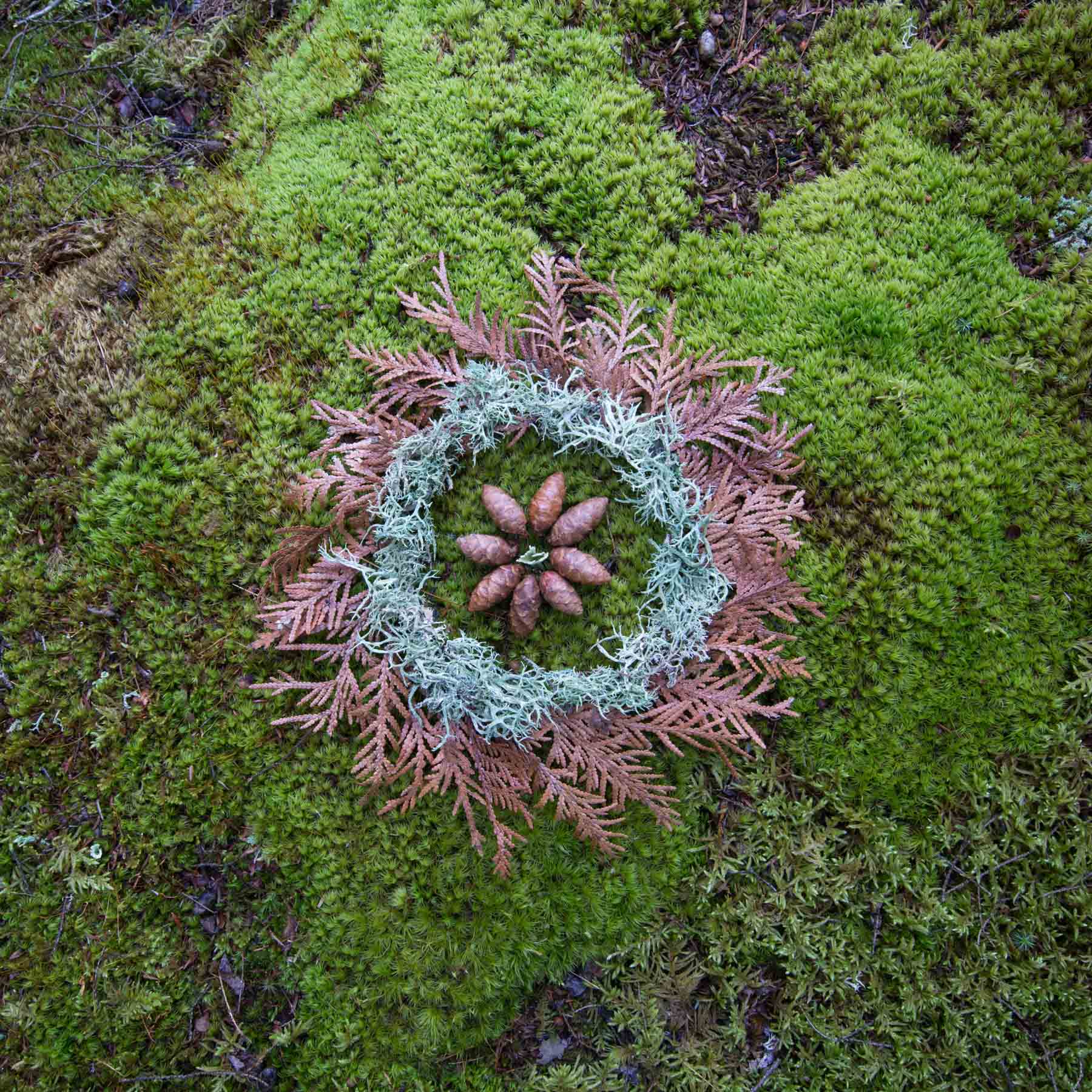
Circular Time Series ‘Wheel of Cedar’
After many years of gardening, my art making became an extension of my garden making. It become a focus for my contemplations on the place of interaction between humans and nature and my understanding of a garden as a human construct.
Fast forward many years and now my home garden has become the source of most of the material I include in my photographic work. It feels like a full circle and leads back to the beginning.
Comment on your work in relation to the cycle of life?
Working with plants is a very relational way to observe the cycle of life. Some plants will complete their lifecycle in one season and they offer a speeded up version of what a human life cycle is. The same can be observed in the pronounced four seasons which we experience here in Canada. Winter is for real here and everything green dies except the evergreen trees and shrubs. In spring one can see the changes from day to day as plants sprout out of the moist earth and come into their full form in early summer. The blooms of summer soon set seeds and complete their growth by fall. As the temperature drops so do the leaves and a gloriously colourful ending happens just before winter sets in again. Where I live, we are fortunate to have four very distinct seasons to experience.
As I spent time with the elderly who were in the ending of their days it was psychically and spiritually relevant to emphasize the cycles of life and to acknowledge and celebrate all the seasons as a way of reinforcing the right and proper ending of all things. I have extended this contemplation into my own artwork and I have been surprised at the beauty that is to be found in the fading and dying of plants, and by extension, of people as well. It is one thing to know a beautiful fresh bloom in its full glory but also to see the exquisite contortions of the withered and wilted sculptural form of its ending.
Both my therapeutic work and my art work have allowed me to know and appreciate all points on the cycle of life and not to over focus on the beauty of youth as is the want of our current culture.
You have had several residencies, including one in India. Can you explain about this residency?
Why you applied to go to India for a residency?
My partner Dan and I were invited to join a group of international artists for a 10 day period in Jaipur, India to make art addressing issues of water scarcity in India.
Where in India did it take you?
The Kala Chaupal residency was hosted and organized by Leenika Beri, a communication specialist who is giving back to her country through organizing art-focused events . We were accommodated at the Diggi Palace Hotel in Jaipur, an old family compound now run as a hotel by the Diggi family. Most of the artists were assigned studio space at the Hotel in a large open building and some artists worked off-site at a paper making mill and a sculpture foundry. My practice is now photo based, so I set up an improvised studio in an open stairway area of the hotel’s courtyard.
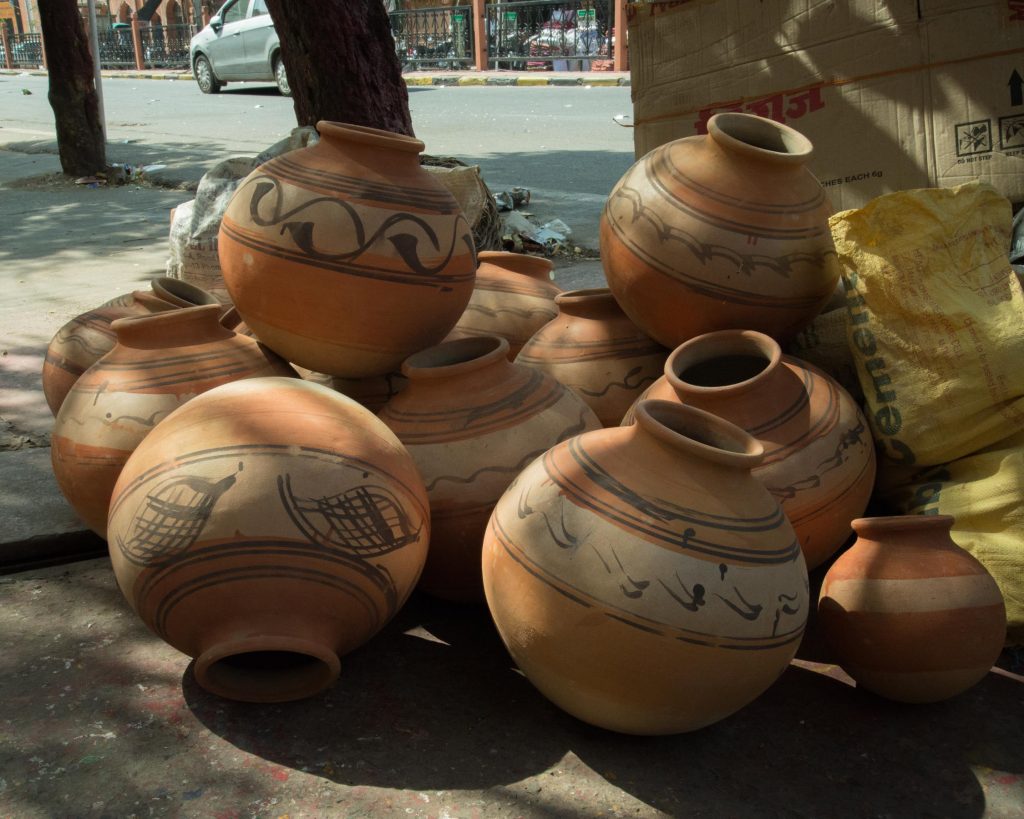
Matka Water Pots, Jaipur Market
What work did it lead to?
Before going to India I did some research and knew generally what I wanted to say but I had no idea what that would look like. Having visited India previously I knew that the people of India have a very different and special relationship with water that we here in Canada do not. It seemed at some level rather perverse to be coming from Canada with our vast resources of water and traveling to India where water has become scarce and challenging to manage, not to mention highly political.

Matka Water Pots, Jaipur, India
Early on in our residency I went to the local market to purchase traditional earthenware water pots to see if they would inspire something. I had seen them employed in many places I had visited previously. It is such a contrast to my experience at home where water comes on demand from a faucet. I was showing the water pots to a fellow artist and explaining that the pots resembled a pregnant belly. Her eyes teared up as she understood the very visceral connection women have with water. Indigenous women in Canada understand themselves to be water carriers in a similar way that India women understand themselves. I also learned that it is women’s work to carry water in India and also in many other traditional cultures.
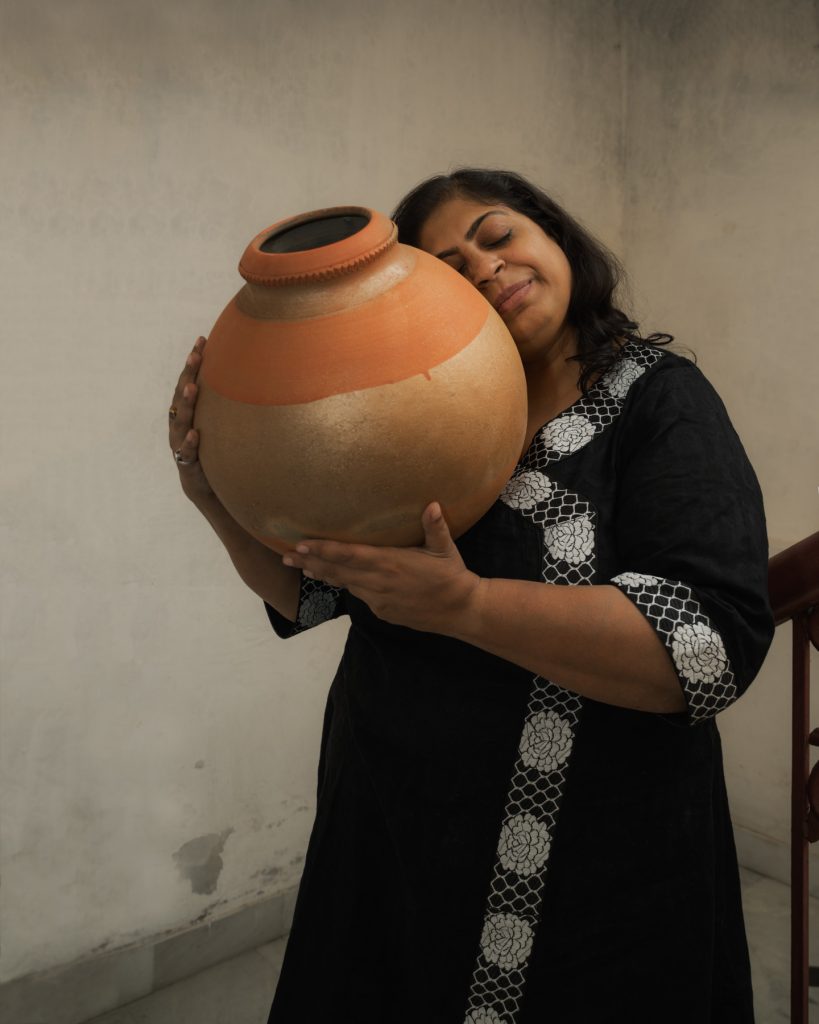
Matka Portait Series, Moutushi, India
From that encounter I got the idea of making portraits of women with earthenware water pots. Each session began with a conversation as I explained my observations regarding the connection between water pots and women’s bodies. We talked about our shared experiences with pregnancy and mothering. Interestingly, the India women were quick to strike a pose carrying the pots on their head as is common in India.
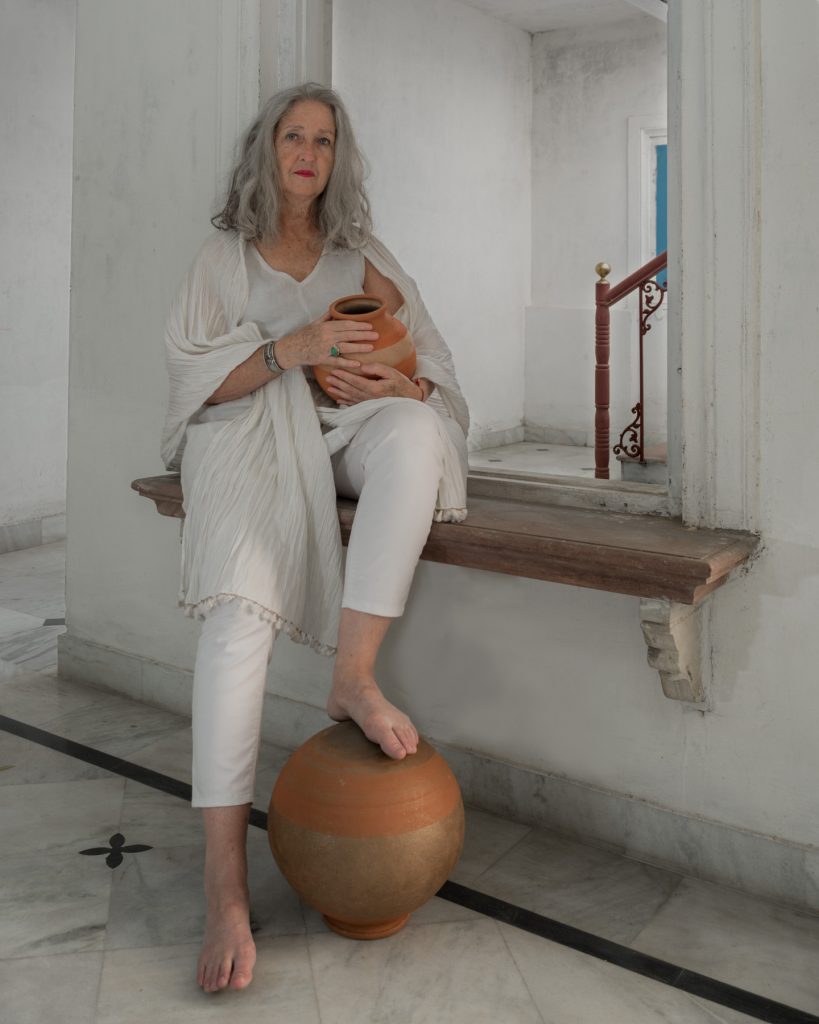
Matka Portait Series, Shanti, India
The North America women related to the pots as either their own womb or the children they had birthed. One of the young artists at the residency introduced herself and on her social media site stated that she was an artist and nudist. I couldn’t resist asking her if she would pose for a birthing scene, something that I knew was very risqué in Indian culture. She readily agreed and together with an older women posing as midwife we made a beautiful portrait. However, I was not surprised when both women declined to have their photographs shared over social media for the sake of their families.
How do you use photography to produce your Botanical images?
I love the feel of handling plant material and so I make arrangements of plants that are ephemeral, meaning they are very short lived. So, photography initially helped me to capture the compositions I made and allowed me to share them. I began this work outdoors, often in remote settings where I might be the only human eyes to see the compositions I made. Now I work indoors, in part not to have to deal with wind and changing lighting conditions.
Sometimes my images are made on a light box which gives a “backlight” quality to the images, reminiscent of those special moments in the garden when the sun is low and illuminates the plants as if from within.
Photography allows me to share my work but now it is the photograph that has become the driver of my work. Working as I do is very freeing. It allows me to create combinations of things that originate in nature, but are combined in a way that becomes a new view on the garden, one that can’t be found in that actual setting, one that has been created not found.
Compare, ‘Collected Garden – Fallen Peonies’ and ‘Etymology of a Flower – Peony’.
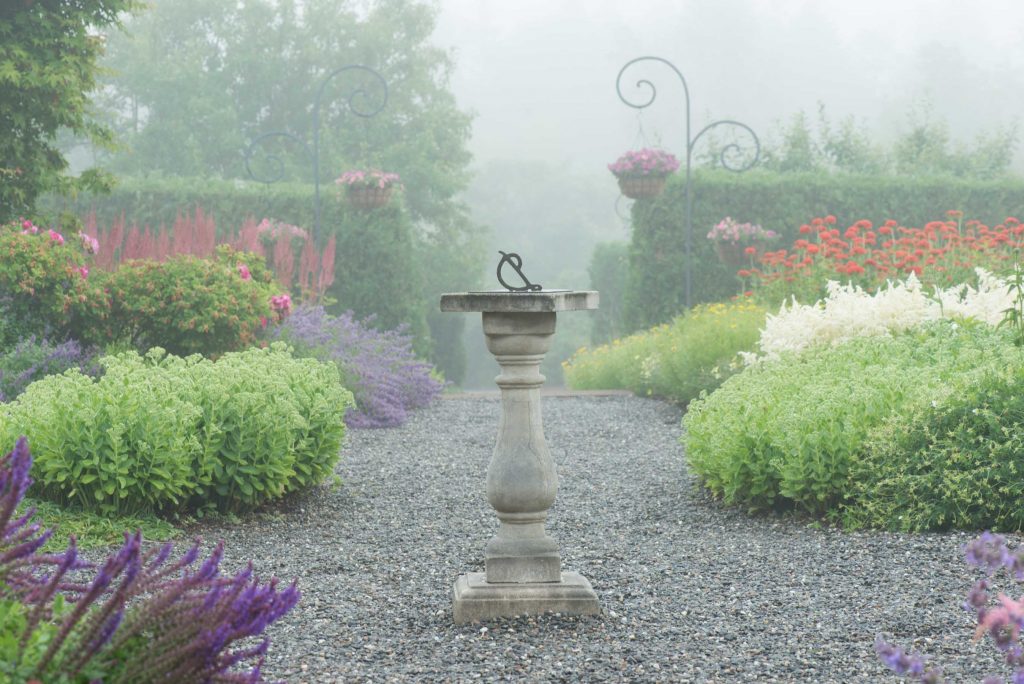
Early morning Kingsbrae Garden
At Kingsbrae International Residency for the Arts in New Brunswick Canada, I set myself a project of making photographic compositions that resonated with botanical herbarium sheets, the method used by plant sciences to preserve plant specimens for later study. Traditional herbarium sheets are mostly beige or brown leaves as the colour of plants fades as they dry. Using a photographic approach along with a scientific curiosity, I deconstructed flowers and laid them out in an arrangement that revealed the intricacy of their making.
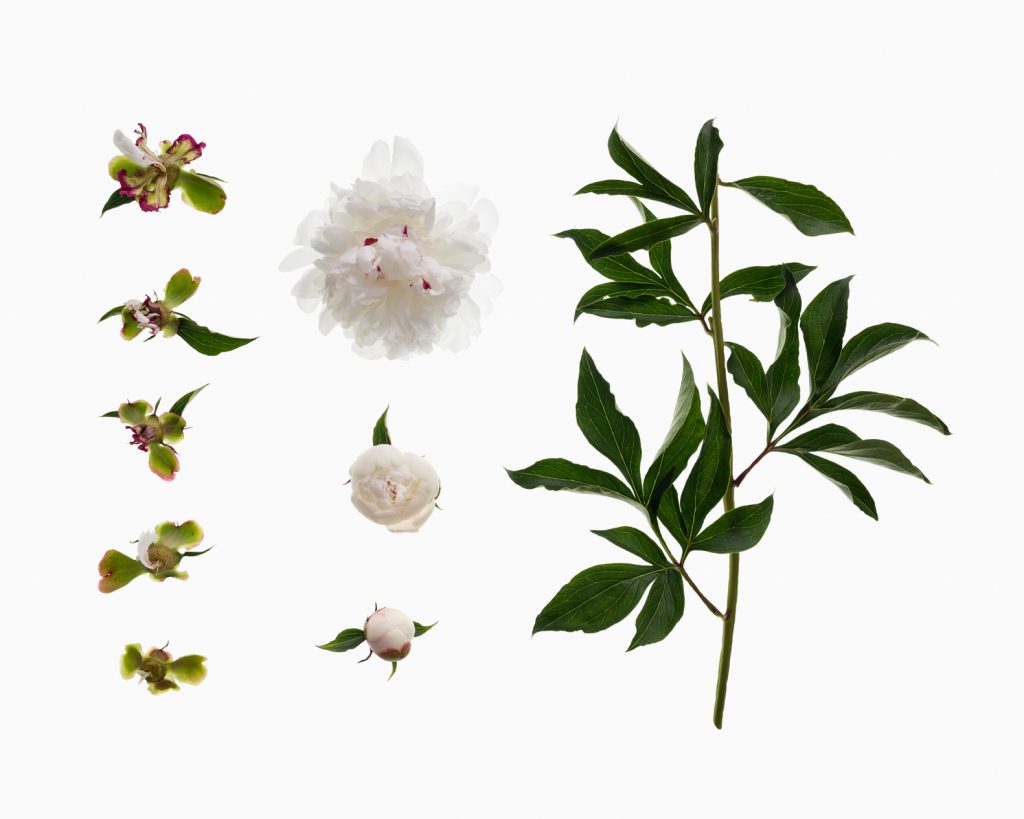 Collected Garden Series, White Peony
Collected Garden Series, White Peony
I had access to the Kingsbrae twenty five acre garden and after working for a week, I had a pile of wilted flowers by my studio door. Most mornings I would get up at dawn and walk in the garden taking photographs of whatever appealed in the moment and at the same time familiarizing myself with the place. One morning the perfect photograph require that I have one foot in a shallow pond. I got my shot and then looked down to check my footing and saw my iPhone in the pond! That just about ruined my day. By the time I got to the studio I was in a rather blue mood. I looked at the pile of dead and wilted flowers by my door and said today I’ll work with you. That accident resulted in a second body of work related to the Etymology Series which become the Collected Garden Series. As I had access to the bounty of a large garden, I was able to make several images that expressed various areas or plant collections in the garden.
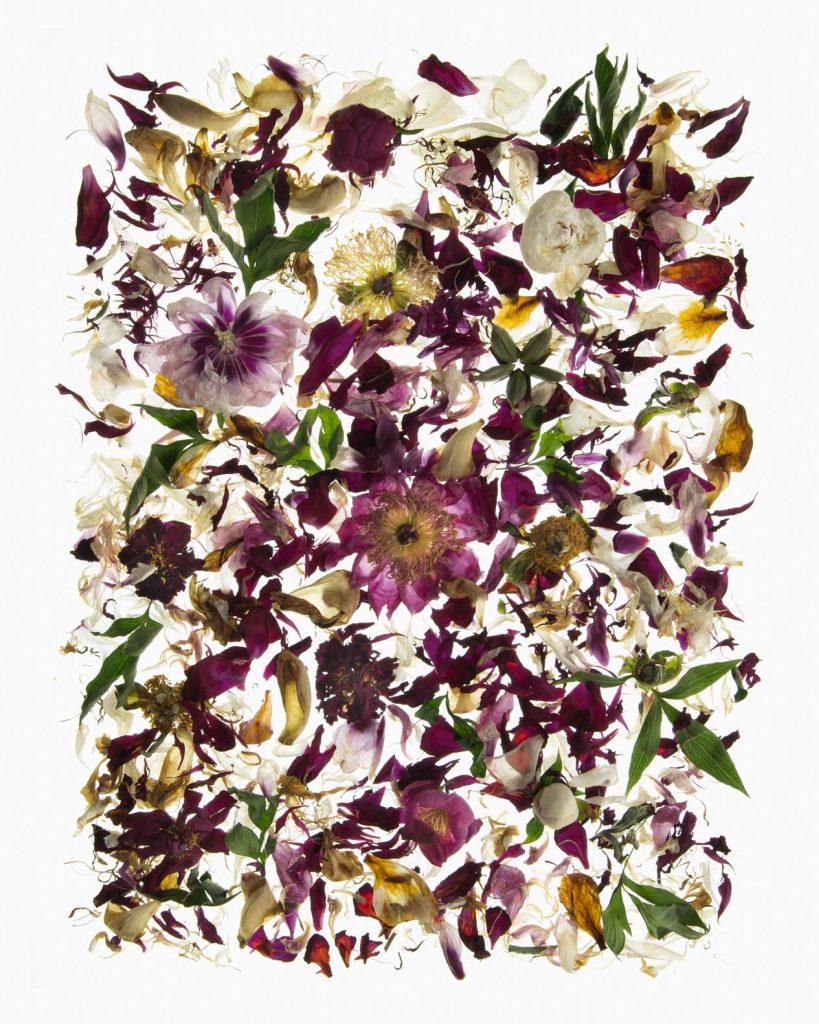
Collected Garden Series, Fallen Peony
I particularly enjoyed Kingsbrae’s White Garden, an homage to Vita Sackville-West’s White Garden for Sissinghurst Castle in England. My image is something not available in the garden as it is a focused and composed view.
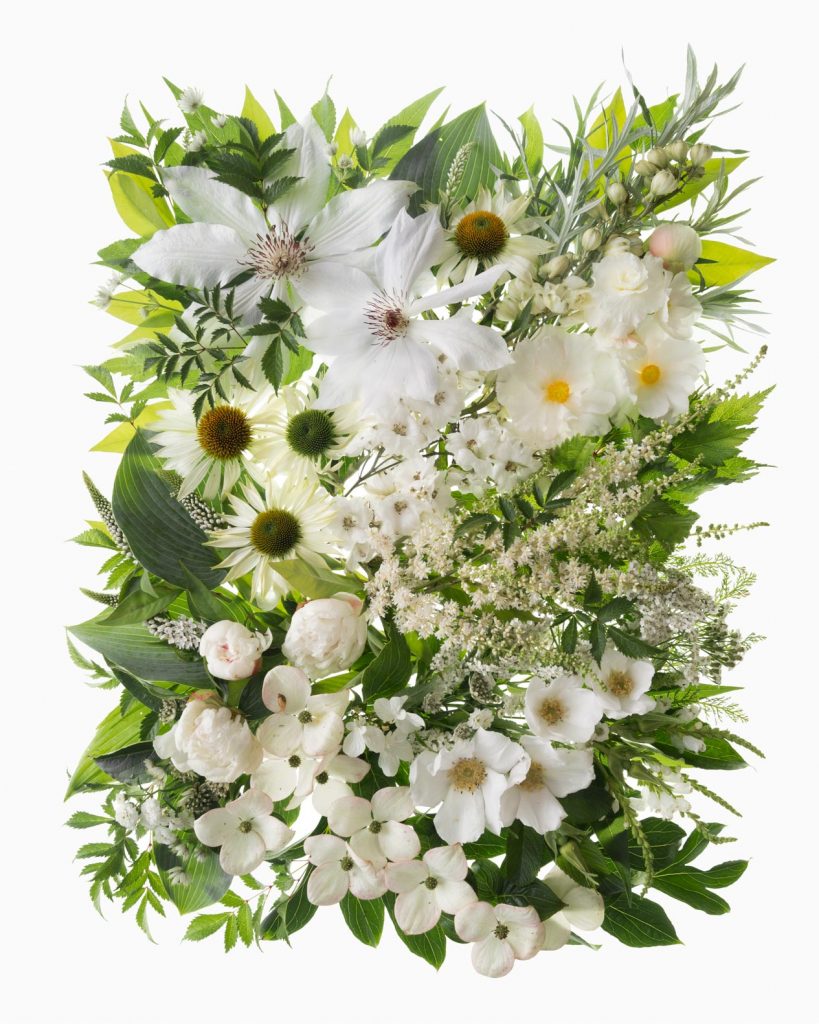
Collected Garden Series, White Garden
Using four pieces from your collection that reflect the four seasons.
Where I live in Canada, we have four very distinct and pronounced seasons. While it is a bit of a cliché to make art based on the seasonal change, it is the reality of where we live.
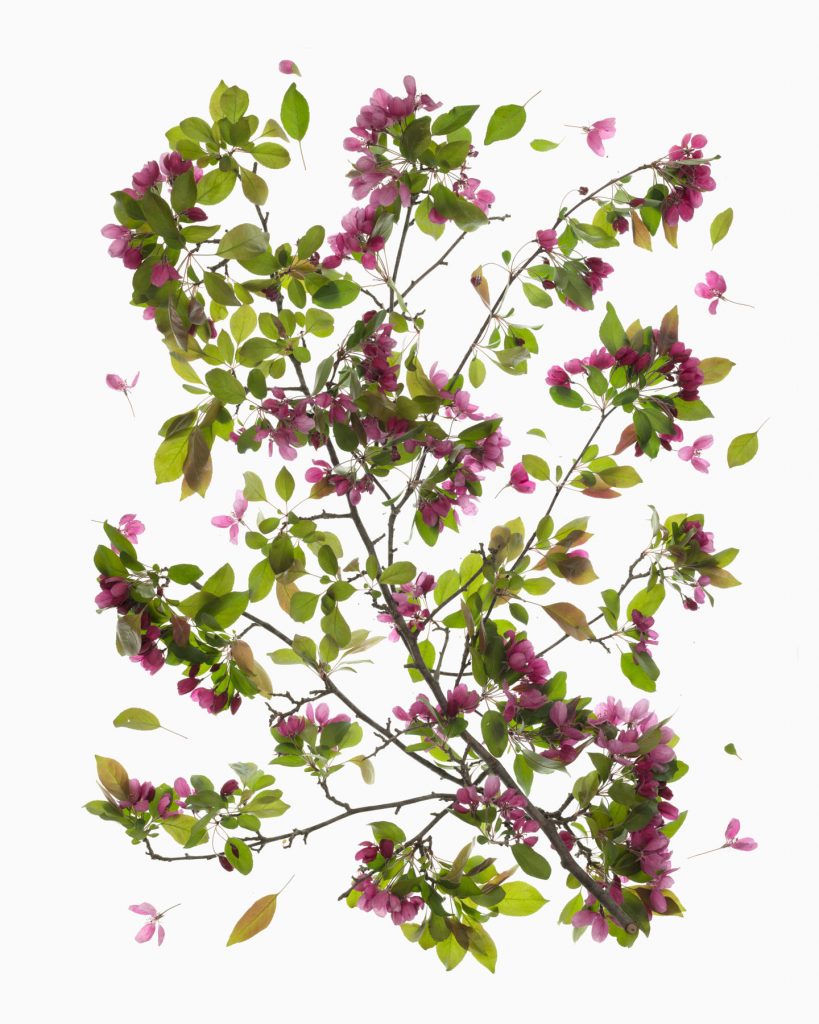
Resisting Pink
My work as a Horticultural Therapist focused my attention on the cycle of life and the cycle of the seasons as I created programs based on growing things from seed, seeing them flower and fruit, harvesting and cooking the bounty of the garden. There is something very reassuring in the return of the light in the spring and the sprouting of the first shoots and the taste of the first greens from the garden.
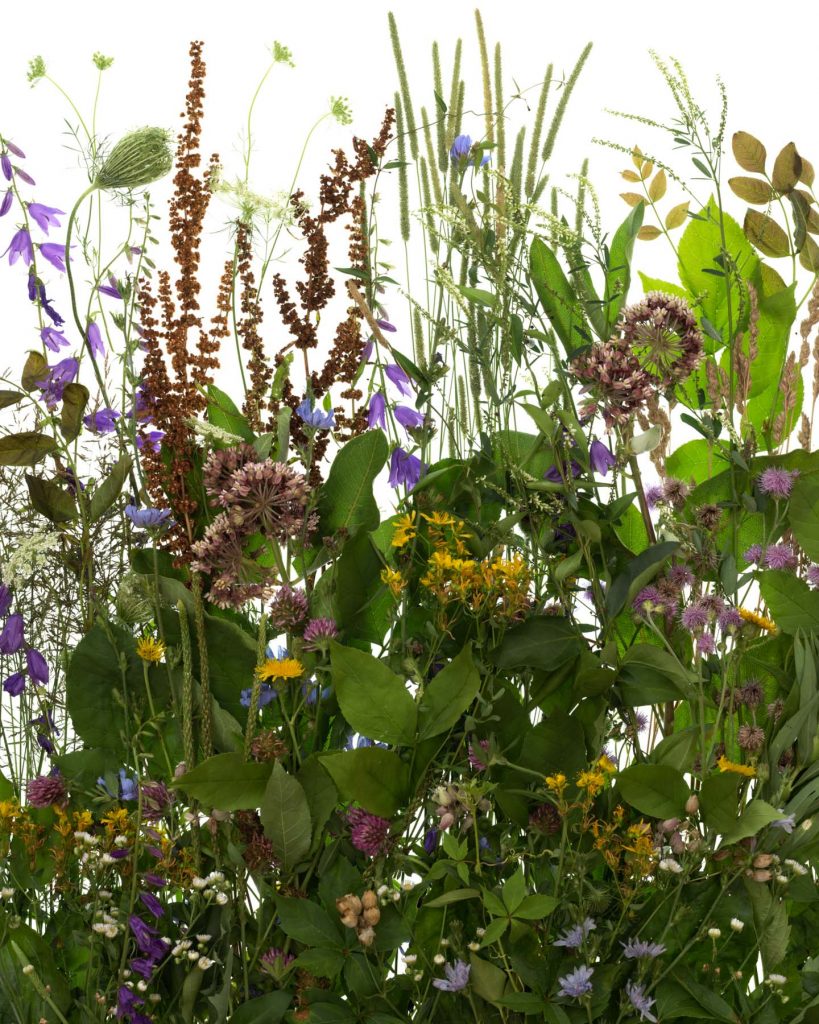
Rochester Field Portrait, July
I worked with one of my colleagues from my time working in Long Term Care and we set ourselves a project to collaborate for a year and mount an exhibition of the work we made together. Cynthia O’Brien is a clay artist and our exhibition entitled LifeCycle Conversations gave us both an opportunity to reconcile the burden of grief we carry from the experience of working with so many elderly residents who died on our watch, not to mention the death of our own fathers.
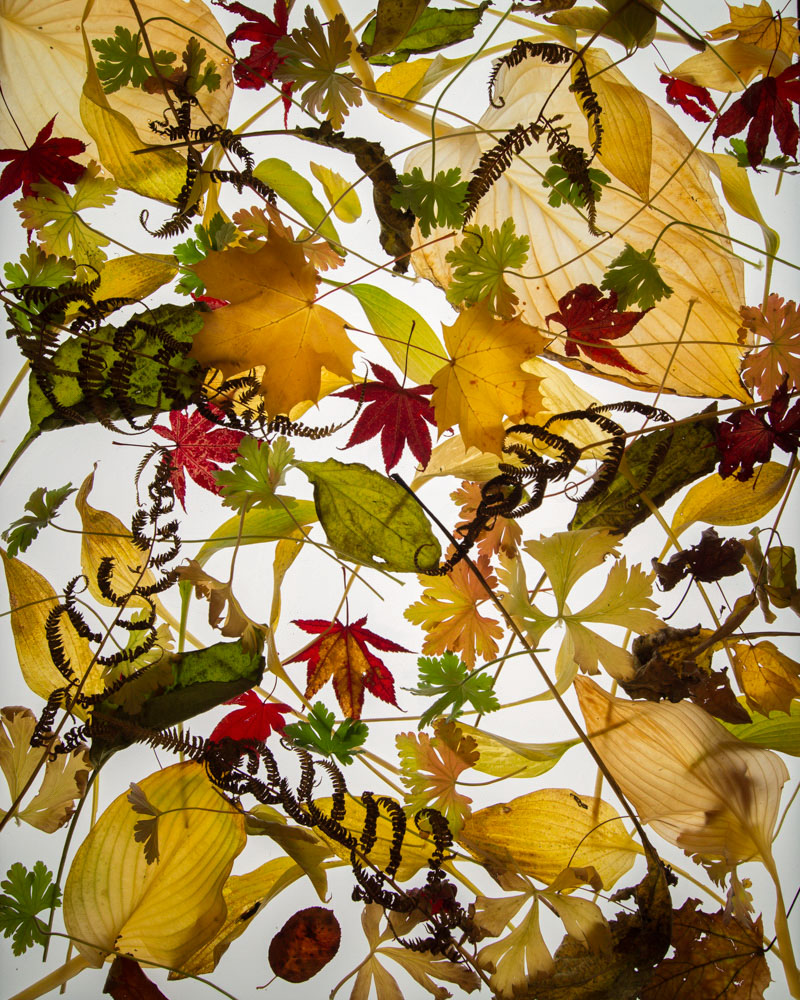
Gathering #3, Desire for Arcadia Series
Most of our work focused on the last chapter of the life cycle but my personal work goes on to encompass all the seasons. It does bring a kind of rounded balance to my view of life. Yes, death is a reality but so is birth the new beginning of the spring, the fullness of summer and the ripening of all things in the fall.
I offer four images to illustrate the seasonal changes and the turning of the great wheel of life.
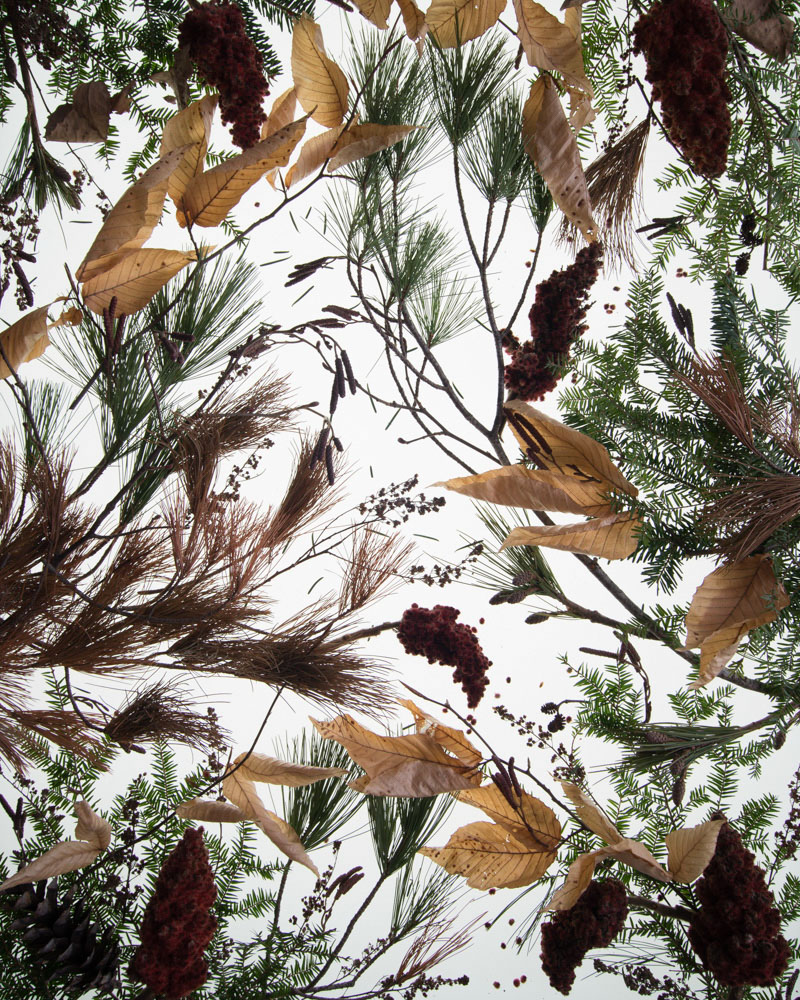
Winter Forrest, Desire for Arcadia Series
In your opinion discuss the importance of nature, health, and art.
Using my art practice, I work toward shifting my perspective from human as machine and human as having dominion over the world, to a more holistic understanding that sees humanity as a part of the continuum of the natural world. I trace the changing seasons and the cycles of life, death and rebirth as a place of observation which I am able to more fully inhabit through my practice as a visual artist. I find myself soothed as well as oriented by handling flowers and twigs, leaves and soil and contemplating the ending of all things.
As an urban dweller I seek to explore and experience the natural world away from the built-up city. Yet my primary access to nature is in my small urban garden at home. It’s not a large garden but it holds a diverse collection of plants that has amused and fascinated me for a couple of decades. As a Horticultural Therapist I learned how important and supportive contact with the natural world is, especially in a sterile health care setting. I do wonder what the next generations of children will be like as many are being raised in a regimented tidy, interior world with far less access to the natural world than what I grew up with.
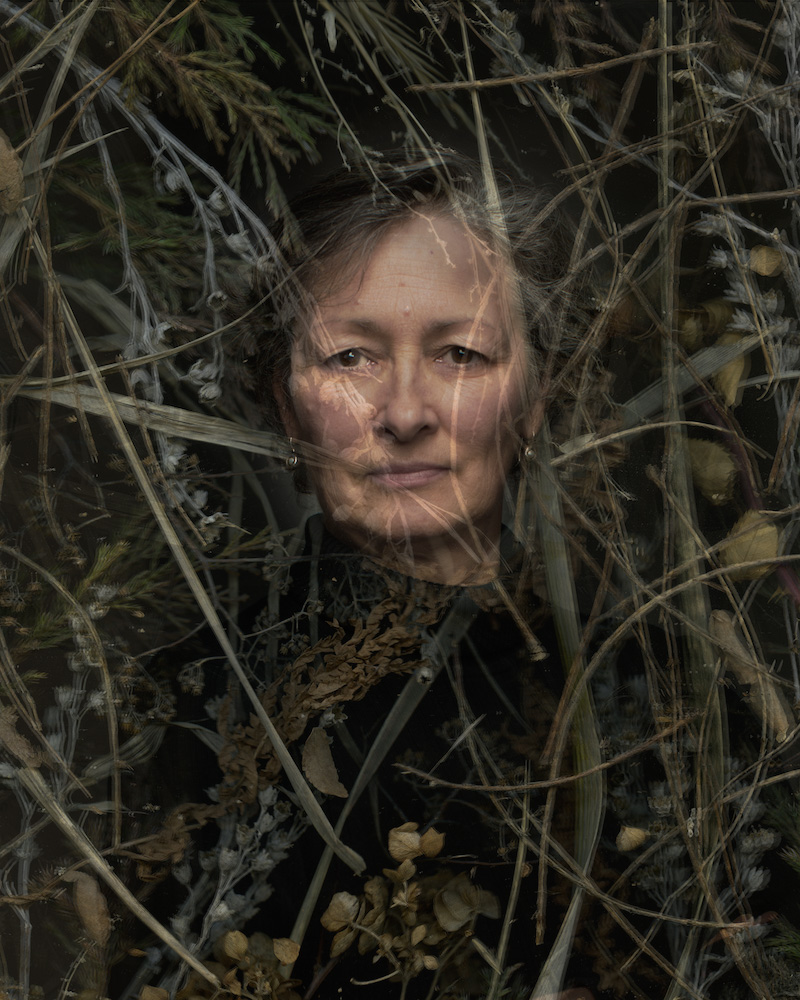
Self Portrait, as Green Woman, Wise Woman
Contact:
Barbara Brown
website: barbarabrown.ca
Instagram: bbrownartist
Deborah Blakeley, Melbourne, Australia
Interview by Deborah Blakeley, November 2019
Think a colleague or friend could benefit from this interview?
Knowledge is one of the biggest assets in any business. So why not forward this on to your friends and colleagues so they too can start taking advantage of the insightful information the artist has given?
Other artists you may be interested in:


